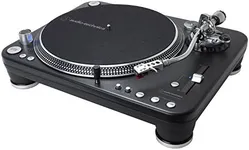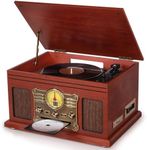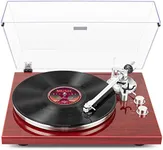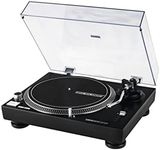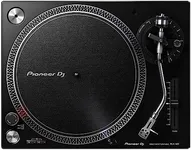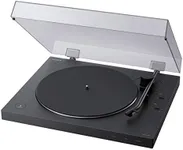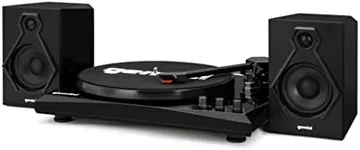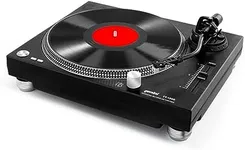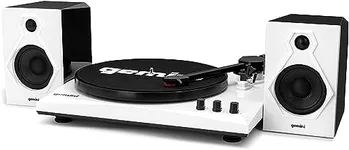Buying Guide for the Best Usb Turntables
When choosing a USB turntable, it's important to consider several key specifications to ensure you get the best fit for your needs. A USB turntable allows you to convert your vinyl records into digital files, making it easier to preserve and enjoy your music collection. Understanding the key specs will help you make an informed decision and find a turntable that meets your requirements.Cartridge TypeThe cartridge is the component that holds the needle (stylus) and reads the grooves on the record. There are two main types: moving magnet (MM) and moving coil (MC). MM cartridges are more common, easier to replace, and generally more affordable, making them suitable for most users. MC cartridges, on the other hand, offer higher fidelity and are preferred by audiophiles. If you're new to vinyl or looking for convenience, an MM cartridge is a good choice. If you're an experienced listener seeking the best sound quality, consider an MC cartridge.
Built-in PreampA preamp amplifies the signal from the turntable to a level that can be processed by your speakers or audio system. Some USB turntables come with a built-in preamp, which simplifies setup and makes it easier to connect to various audio equipment. If you don't have a separate preamp or want a straightforward setup, look for a turntable with a built-in preamp. If you already have a high-quality external preamp, you might prefer a turntable without one to maintain the integrity of your audio signal.
USB OutputThe USB output allows you to connect the turntable to a computer to digitize your vinyl records. This feature is essential if you want to create digital copies of your music. When evaluating USB outputs, consider the compatibility with your computer's operating system and the quality of the included software for recording and editing. Ensure the turntable you choose has a reliable USB connection and user-friendly software to make the digitization process smooth and efficient.
Drive TypeTurntables can have either a belt drive or a direct drive. Belt drive turntables use an elastic belt to spin the platter, which helps reduce motor noise and vibration, resulting in better sound quality. They are ideal for home listening. Direct drive turntables have the motor directly connected to the platter, providing more consistent speed and durability, making them popular among DJs. If you prioritize sound quality for home use, a belt drive turntable is a good choice. If you need a turntable for DJing or heavy use, consider a direct drive model.
Speed SettingsTurntables typically support different speed settings, such as 33 1/3 RPM, 45 RPM, and sometimes 78 RPM. These speeds correspond to different types of records. Most modern records play at 33 1/3 RPM or 45 RPM, while older records may require 78 RPM. Ensure the turntable you choose supports the speeds you need for your record collection. If you have a diverse collection, look for a turntable with all three speed settings. If you primarily listen to modern records, a turntable with just 33 1/3 and 45 RPM settings will suffice.
Build QualityThe build quality of a turntable affects its durability, performance, and overall sound quality. Look for a turntable with a sturdy, well-constructed base (plinth) to minimize vibrations and ensure stable playback. Materials like metal and high-quality plastics are preferable. A heavier turntable generally indicates better build quality and stability. Consider your usage and environment when evaluating build quality. If you plan to use the turntable frequently or in a setting with potential vibrations, invest in a model with superior build quality.


